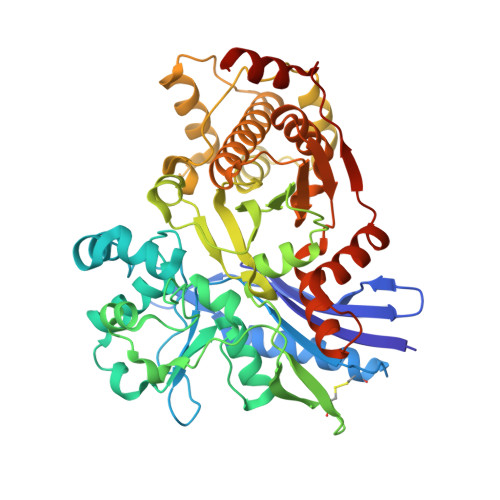Structure and Reaction Mechanism of L-Rhamnulose Kinase from Escherichia Coli.
Grueninger, D., Schulz, G.E.(2006) J Mol Biol 359: 787
- PubMed: 16674975
- DOI: https://doi.org/10.1016/j.jmb.2006.04.013
- Primary Citation of Related Structures:
2CGJ, 2CGK, 2CGL - PubMed Abstract:
Bacterial L-rhamnulose kinase participates in the degradation of L-rhamnose, which is ubiquitous and particularly abundant in some plants. The enzyme catalyzes the transfer of the gamma-phosphate group from ATP to the 1-hydroxyl group of L-rhamnulose. We determined the crystal structures of the substrate-free kinase and of a complex between the enzyme, ADP and L-fructose, which besides rhamnulose is also processed. According to its chainfold, the kinase belongs to the hexokinase-hsp70-actin superfamily. The closest structurally known homologue is glycerol kinase. The reported structures reveal a large conformational change on substrate binding as well as the key residues involved in catalysis. The substrates ADP and beta-L-fructose are in an ideal position to define a direct in-line phosphoryl transfer through a bipyramidal pentavalent intermediate. The enzyme contains one disulfide bridge at a position where two homologous glycerol kinases are regulated by phosphorylation and effector binding, respectively, and it has two more pairs of cysteine residues near the surface that are poised for bridging. However, identical catalytic rates were observed for the enzyme in reducing and oxidizing environments, suggesting that regulation by disulfide formation is unlikely.
Organizational Affiliation:
Institut für Organische Chemie und Biochemie, Albert-Ludwigs-Universität, Albertstr. 21, 79104 Freiburg im Breisgau, Germany.














